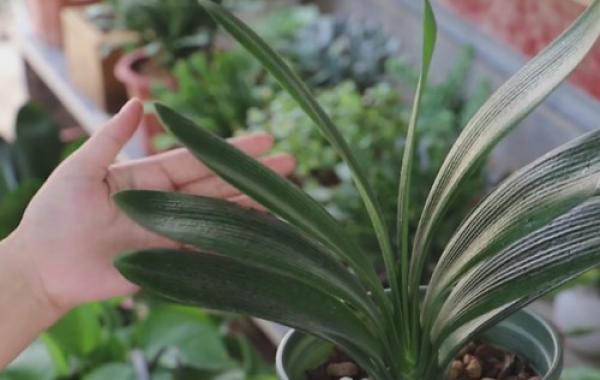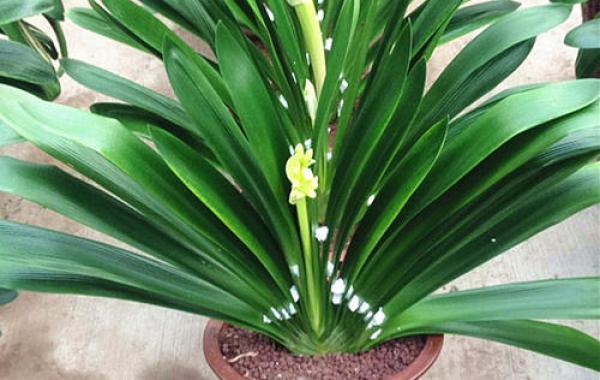How can we prolong the flowering period of Cymbidium?

How to prolong the flowering period of Cymbidium.
It is not impossible to prolong the flowering time of Cymbidium. Under suitable climatic conditions, an inflorescence can blossom for about 45 days. How can we prolong the flowering period?
1. The practice of having many and strong roots has proved that if the root system is weak or nearly half of the roots rot, it will be difficult for the plant to blossom in the same year. Only when there are more than 20 strong roots can the plant have the basis for flowering.
two。 The basic conditions for flowering can only be achieved when the leaves reach more than 16 pieces of nutrition accumulated by photosynthesis, and the area of photosynthesis is related to the number of leaves. If there are too few leaves, the nutrients accumulated by photosynthesis are not enough to bud into flowers. Therefore, it is not recommended to break off the leaves with poor bottom shape for the sake of beautiful plant shape.
3. The false bulb can be seen that the flower buds will grow rapidly after the flowering of Cymbidium. Because the gentleman orchid is stout and has a large number of buds, the pseudobulb can be seen to be thicker after autumn. If the false bulb is not thickened after autumn, it means that the magnolia has not yet become a flower.
4. The two groups of leaves around the "big leaves" are obviously different from other leaves, showing broad and strong veins, which is usually referred to as "big leaves". The reason why a gentleman orchid forms a "big leaf" is that once the plant becomes a flower, its nutrition will be mainly supplied to the flower bud, so that the leaves close to the flower bud "benefit", resulting in a "big leaf" that is different from other leaves. Therefore, as long as the "big leaf" appears, generally speaking, the plant can blossom normally.
When the flowering period was prolonged, the plant could be placed at a temperature of about 15 ℃, and the light time could be reduced appropriately.
Although the gentleman orchid likes the semi-overcast environment, the longer the sunshine in winter, the better. During flowering, strong light will shorten the flowering period, while weak light can prolong it. It likes to be warm and cool, and avoids severe cold and heat. It generally grows well at a temperature of 18 ℃ and 20 ℃, and stops growing below 5 Mel. After the orchid enters the room, the light is limited and needs to be adjusted by manually moving the flowerpot.
Fertilizing Magnolia has the fastest vegetative growth rate in winter and needs the most nutrients. therefore, it is very important to apply winter fertilizer well. Before entering the room, the flowerpot should be watered with bone powder, fried sesame seeds, cooked soybeans or new high-fat film every 15 to 20 days, and the roots can also be watered with soaking solution from animal and plant remains. It is necessary to ensure that the fertilizer is ripened and applied lightly to prevent the injury of thick fertilizer.
Dimming gentleman orchid likes to scatter light and avoid direct strong light. Winter indoor maintenance, flowerpots should be placed in a place with plenty of light. Especially before flowering, there should be good light, which is beneficial to the development and firmness of flower buds. Spraying new high lipid film combined with Huazhuangtiling can activate the positive energy of plant ecological growth, broaden the path of plant ducts, and improve the yield and quality of water and fertilizer absorption. After flowering, proper cooling, avoiding strong light and keeping good ventilation are beneficial to prolong the flowering period.
Protecting leaves, fat and strong flowers, colorful chlorophyll, short, wide, thick, green, bright and strong leaves are the characteristics of healthy magnolia, and are the basis for promoting flowering and improving ornamental value. To maintain strong leaf quality, in addition to providing reasonable fertilizer and water, it is necessary to keep the leaf surface clean in order to improve photosynthetic efficiency. The method of leaf protection is as follows: first, wash the leaves regularly, spray or wipe the dust on the polluted leaves with the same water to keep the leaves clean; secondly, spray fungicides in time to prevent the occurrence of leaf spot, leaf blight and stem rot and ensure that the leaves are green and flowers are beautiful.
Related
- Is the orchid suitable for indoor use? Is it good for the body?
- How to prevent the empty root of orchids?
- What to do after the crab claw orchid is withered?
- Why are the leaves of orchids always yellow? Fertilizing and watering.
- Can the root of the gentleman orchid be saved if it is rotten?
- Diagnosis and treatment of cotton-blowing beetle insects in Cymbidium
- There is a way for a gentleman's orchid to rot.
- What is the most suitable temperature and humidity for the orchid?
- How to raise a gentleman's orchid? Cultivation techniques of Cymbidium
- How to prepare the nutritive soil for the cultivation of Cymbidium



